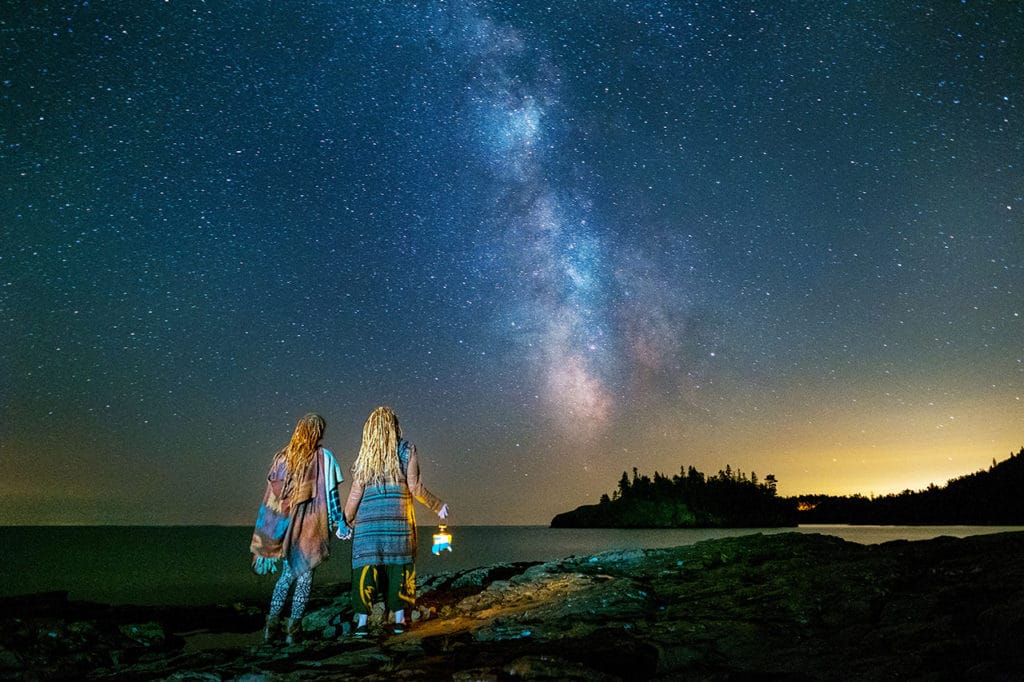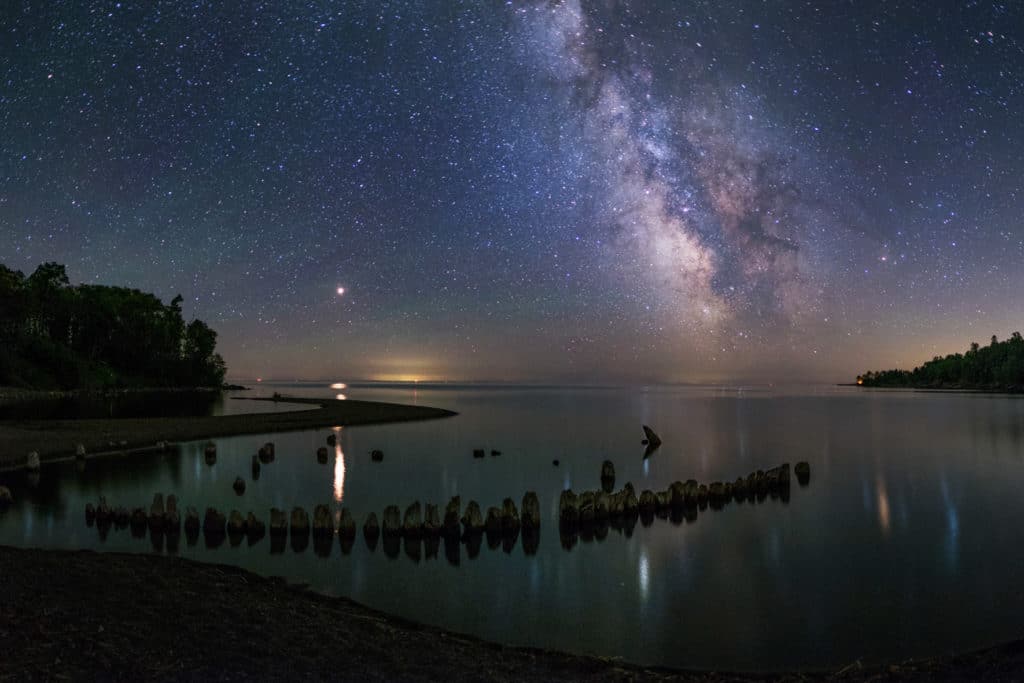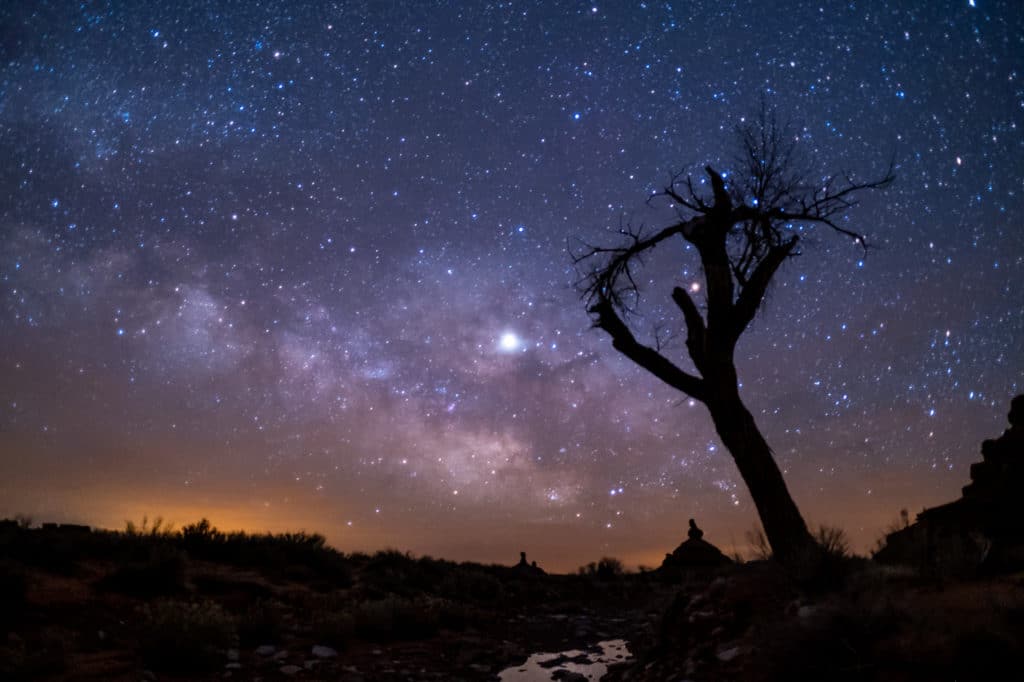
As a photography instructor and teacher of night sky photography I am frequently asked this question. Knowing that if you ask three different photographers what is the best camera or lens you are apt to get three different answers I decided to ask some of my friends and colleagues what they thought was the best set up for night skies.
I asked the following five photographers what they recommend and use:
Mike Shaw
Curt Brown
Bryan Hansel
Don Tredinnick
John Gregor (myself)
These five photographers are all photographic educators and in particular night sky instructors. They regularly work with a wide variety of students, and camera brands. Who are better qualified to make recommendations than those who see a wide variety of results from many different camera and lens manufacturers. Night Sky photography is probably the most demanding genre of landscape photography, both in terms of demands upon your equipment as well as your technique. To achieve excellent results your technique has to be spot on and your equipment needs to be of at least a bare minimum of acceptability. While you don’t need a real expensive camera you can save yourself a lot of headache by not trying to capture the Milky Way while using a standard “kit” lens that is found on many basic cameras sold today. More than anything else the glass you put in front of the camera determines the quality of the image and this is especially important in night sky photography.
I have formatted the survey answers to the questions of what are the best night sky lenses for each of the top brands of cameras. Please note that Rokinon, Samyang, and Bower are all the same brand lens, so for simplicity I simply refer to them as Rokinon.

Mike Shaw
Canon Full Frame N/O
Canon Sub Frame N/O
Nikon Full Frame: Nikkor 14-24 f2.8
Nikon Sub Frame N/O
Sony Full Frame N/O
Sony Sub Frame N/O
Preferred Camera Set up:
Preferred Camera Set up: Nikon D850 with the Nikkor 14-24 f/2.8. If I had to choose one lens for an evening’s adventure, that would be it! The 14 mm setting covers the wide sky with acceptable distortion; and the 24 mm setting allows for crisp panoramas.
Additional Comments:
Ian Norman (lonelyspeck.com) has some great reviews on all aspects of lenses, gear etc.
Mike Shaw is a photographer, author, speaker and workshop leader. He has traveled with his camera to remote, dark-sky wilderness areas around the world. His two books explain everything you need to create incredible nightscape images and time-lapses. He is known for his friendly, down-to-earth teaching style and enjoys collaborating with others. Website: mikeshawphotography.com
Curt Brown
Canon Full Frame: Sigma 14, 20, or 24mm f1.4 Art
Canon Sub Frame: Sigma 14 f1.4 or Rokinon 14 f2.8
Nikon Full Frame N/O
Nikon Sub Frame N/O
Sony Full Frame N/O
Sony Sub Frame N/O
Preferred Set up:
Price and quality of image I would go with a Canon 6D Full frame 20.2 megapixel for Astro photography, paired with a sigma art lens if possible, otherwise pop a Rokinon on it and you have a great setup.
Additional Comments:
I am a budget shooter so cost factors into my decisions for my camera gear.
Take budget out of the equation and I would be carrying an Sony A7 II,or Sony A7 III, and would pair it with a lens in the range of 16 mm F2. No particular lens in mind.
Curt Brown is a landscape photographer who specializes in capturing the night sky. The majority of his images can be found on the north shore of Lake Superior and other locations scattered to the west. He offers in depth night photography workshops focusing on creating the sharpest, cleanest images possible in low light. To contact Curt Brown of Brown Imagery about workshops go to BrownImageryMN.com

Bryan Hansel
Canon Full Frame – Tamron 15-30 f/2.8, Rokinon 20 f/1.8, Sigma 35mm f/1.4, Venus Laowa 12mm f/2.8.
Canon Sub Frame – Tokina 11-20 f/2.8, Sigma 18-35 f/1.8 Art, Rokinon 10mm f/2.8, Rokinon 16mm f/2.0
Nikon Full Frame: Nikon 14-24 f/2.8 or Tamron 15-30 f/2, Nikon 20mm f/1.8, Sigma 35 f/1.4, Venus Laowa 12mm f/2.8.
Nikon Sub Frame: Tokina 11-20 f/2.8, Sigma 18-35 f/1.8 Art, Rokinon 10mm f/2.8, Rokinon 16mm f/2.0
Sony Full Frame: Zeiss Batis 18mm f/2.8, Rokinon 20mm, Zeiss Batis 25mm f/2, Tamron 15-20 f/2.8 (adapted), Sony 16-35 f/2.8, Laowa 15mm f/2.
Sony Sub Frame: Rokinon 12mm f/2, or adapt the Tokna 11-20 f/2.8
Fuji – Rokinon 12mm f/2, Fuji 16mm f/1.4
Preferred Camera Set up:
Nikon D850 with a Nikon 14-24 f2.8. If I was kayaking or adventuring I’d go with the Nikon Z 7 and a Nikon 20 f1.8
Additional Comments:
Ideally, you want a camera with the latest generation Sony sensor and ideally that will be a sensor that shows invariant ISO. ISO invariant sensors do most of the boosting of the brightness, i.e. gain, from an ISO changeon the digital instead of the analog side. That means you can use a lower ISO, gain more dynamic range, preserve highlights, preserve colors and boost the brightness as needed in your image processing program.
Bryan is an award-winning professional landscape photographer and outdoor educator. He has over 25 years of photography experience with over 100 publication credits from publications such as National Geographic, Outdoor Photographer, Ocean Paddler, Backpacker Magazine and many more. He started his popular photography workshop program in 2006. His programs take students to the best and often unknown locations in the northland and across the nation to National Parks. He lives in Grand Marais, Minnesota. You can learn more about his work and his workshops at https://www.bryanhansel.com/services/photography-workshops-and-photography-courses/
Don Tredinnick
Canon Full Frame: Tamron 15-30 f/2.8, IRIX 15mm f/2.4.
Canon Sub Frame: N/O
Nikon Full Frame: Nikon 14-24 f2.8 Zeiss 21mm f/2.8
Nikon Sub Frame: Tokina 11-16 Zeiss 21mm f/2.8
Sony Full Frame N/O
Sony Sub Frame N/O
Preferred Camera Set up:
Nikon D750 with the 14-24 Nikon lens. From what I have seen, the D750 has the best high ISO performance across all of the various camera brands/models. Paired with the 14-24, stars are extremely sharp, color rendition is spot-on, and because of the high ISO performance, the milky way and star trails are nice and bright coming out of the camera.
Additional Comments:
For Canon, I have seen great results with their full frame camera bodies. The crop sensors seem to have noise issues with LENR turned off, so for capturing a sequence of images for things like Star Trails, I would recommend the full frame bodies. What I do see a lot of lately is Olympus. A great camera lens combination is the Olympus OMD E1 with the 12-40mm f/2.8 lens. Although these cameras have probably the most challenging menu system of any camera ever made, once you locate the settings for night photography they have amazing capabilities.
Don is a landscape and wildlife photographer based in the Twin Cities of Minnesota. He teaches classes at the Minnesota Landscape Arboretum, the Dow Gallery in St. Paul, and also runs destination weekend long workshops as part of Frozen Hiker Photography. His work has appeared in publications, marketing materials, and in several gallery shows. Most recently, 2 of his night photography images were on display at both the Redwoods National Park and Key Biscayne National Park Visitor’s Centers.Website Link: www.frozenhiker.com

John Gregor
Canon Full Frame: Zeiss Milvus 15mm f2.8, Sigma Art 20 or 24mm f1.4, Rokinon 24mm f1.4
Canon Sub Frame: Sigma Art 14 or 20mm f1.4
Nikon Full Frame: Zeiss Milvus 15mm f2.8, Sigma Art 20 or 24mm f1.4, Rokinon 24mm f1.4
Nikon Sub Frame: Sigma Art 14 or 20mm f1.4
Sony Full Frame: Zeiss Batis 18mm f2.8, Sigma Art 20 or 24mm f1.4, Rokinon 24mm f1.4
Sony Sub Frame: N/O
Fujifilm X: Fujinon 14mm f2.8, Fujinon 16mm f1.4
Preferred Camera Set up:
Fujifilm X-T3 with Fujinon 16mm f1.4. While the equivalent angle of view of the 16mm on the X-T3 is 24mm on a full frame camera (the X-T3 is a sub-frame sized sensor) the speed and quality of the lens is beyond compare. Results from this camera will rival any full frame camera on the market today. If I need to capture a larger part of the sky I will shoot a panorama and stitch the image in Photoshop.
Additional Comments:
I am not a fan of the Rokinon 14mm f2.8 lens as the vignette fall off of this lens is off the charts—what that means is it really does not pass the amount of light that you would expect from an aperture of 2.8, it is for all practical purposes a 5.6 lens. The Rokinon 24mm f1.4 is a very good lens with excellent character tics for night sky photography. In general I feel the bare minimum aperture speed for a night sky lens should be 2.8 with my preference for something even faster like a 2.0 or 1.4.
John Gregor is a professional travel and landscape photographer with over 35 years experience. He has taught photography workshops for over 30 years and specifically night sky workshops for the last 8 years. His night sky workshops include computer lab time and printmaking skills so everyone leaves the workshop with a fine art print of their favorite image from the workshop. More information about his workshops at www.coldsnapphotography.com .

